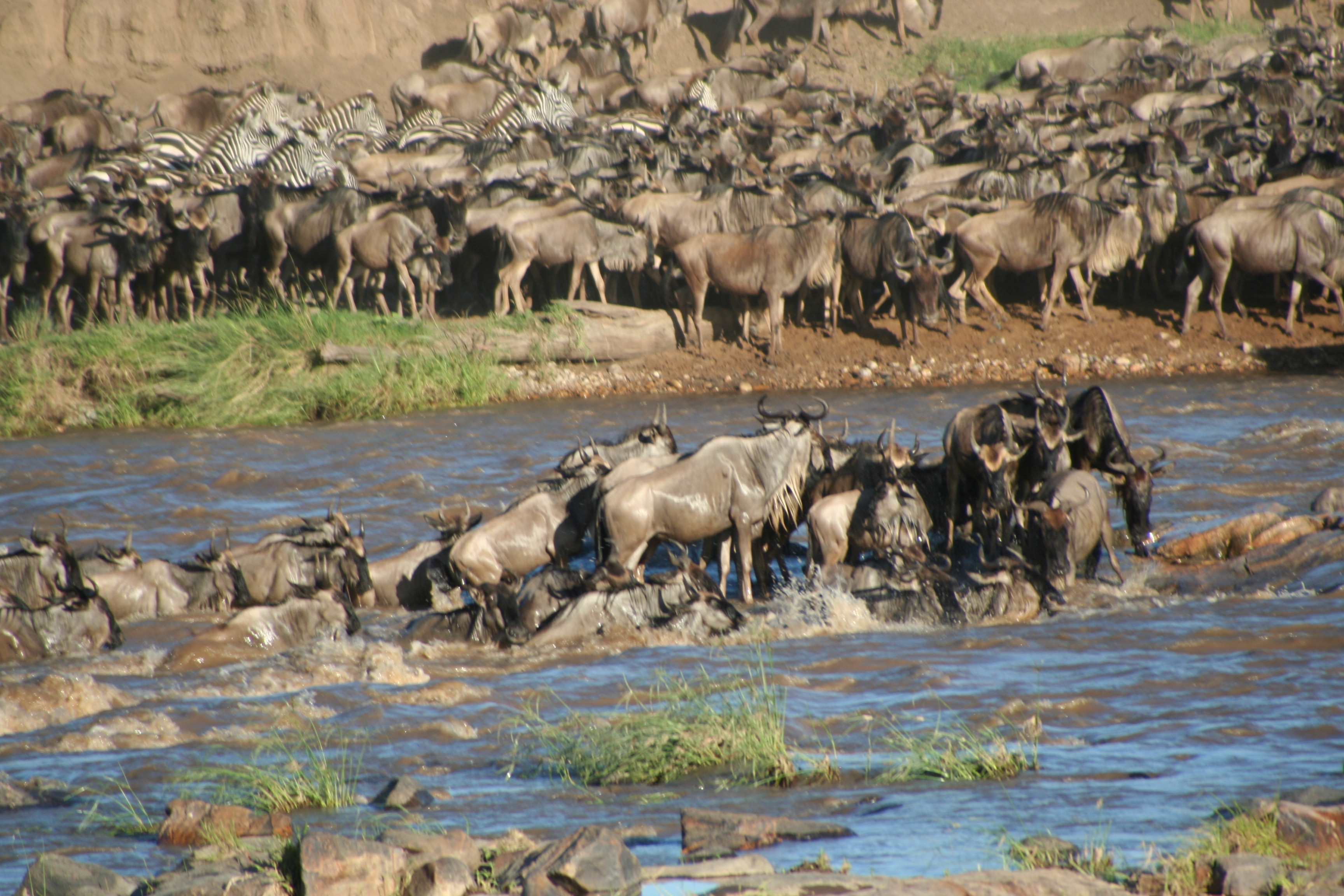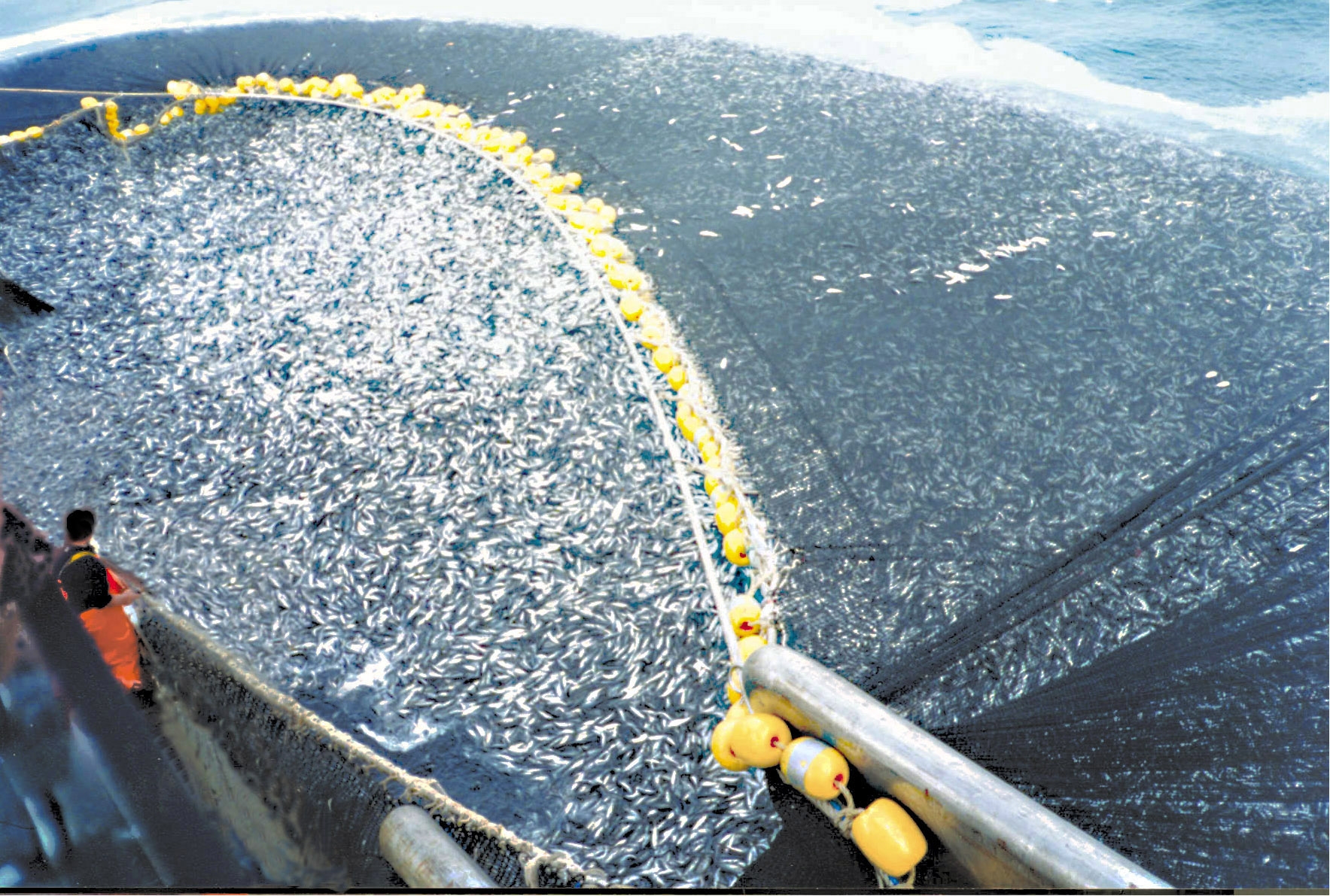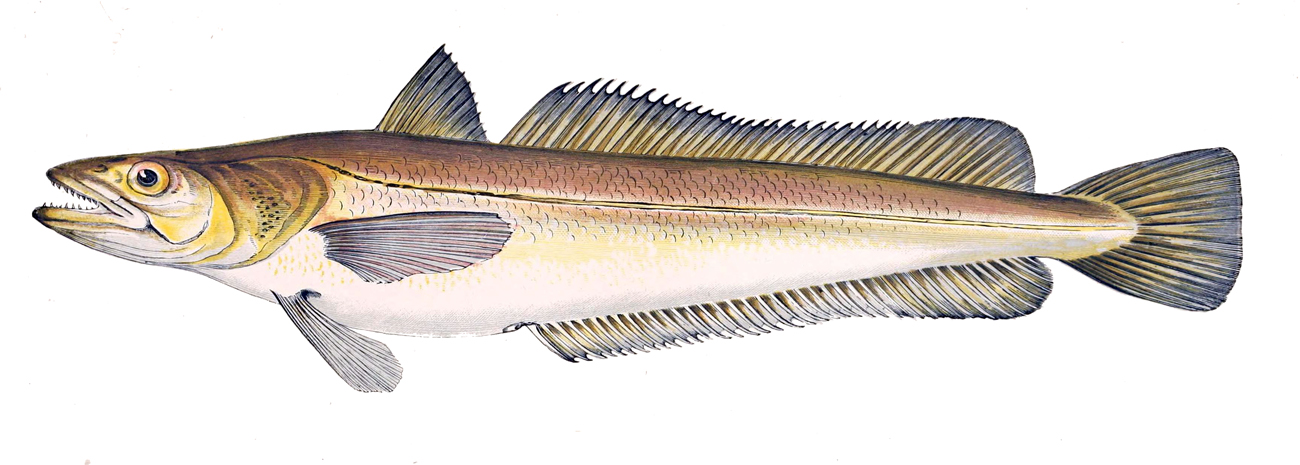|
European Pilchard
The European pilchard (''Sardina pilchardus'') is a species of ray-finned fish in the monotypic genus ''Sardina''. The young of the species are among the many fish that are sometimes called sardines. This common species is found in the northeast Atlantic, the Mediterranean, and the Black Sea at depths of . It reaches up to in length and mostly feeds on planktonic crustaceans. This schooling species is a batch spawner where each female lays 50,000–60,000 eggs. Description The European pilchard is a small to medium-sized, somewhat elongated, herring-like fish. The origin of the pelvic fins is well behind that of the dorsal fin, and the last two soft rays on the anal fin are larger than the remainder. The upper parts are green or olive, the flanks are golden and the belly is silvery. Not to be confused with its American counterpart, the California sardine, ''Sardina sagax,'' the European sardine ''S. pilchardus'' does not have a row of dark blotches. They also have scales that ... [...More Info...] [...Related Items...] OR: [Wikipedia] [Google] [Baidu] |
Grigore Antipa
Grigore Antipa (; 27 November 1867 in Botoșani – 9 March 1944 in Bucharest) was a Romanian naturalist, Zoology, zoologist, Ichthyology, ichthyologist, Ecology, ecologist, Oceanography, oceanologist, Darwinism, Darwinist biologist who studied the fauna of the Danube Delta and the Black Sea. Between 1892 and 1944 he was the director of the Grigore Antipa National Museum of Natural History, Bucharest Natural History Museum, which now bears his name. He is also considered to be the first person to modernize the diorama by emphasizing the three-dimensional aspect and first to use dioramas in a museum setting. He is the scientist who reorganized the Grigore Antipa National Museum of Natural History in the new building that today bears his name, designed by the architect Grigore Cerchez, built in 1906 and inaugurated by Carol I of Romania in 1908. He was elected as member of the Romanian Academy in 1910 and was also a member of several foreign academies. Grigore Antipa founded a sch ... [...More Info...] [...Related Items...] OR: [Wikipedia] [Google] [Baidu] |
Migration (ecology)
Migration, in ecology, is the large-scale movement of members of a species to a different environment. Migration is a natural behavior and component of the life cycle of many species of mobile organisms, not limited to animals, though animal migration is the best known type. Migration is often cyclical, frequently occurring on a seasonal basis, and in some cases on a daily basis. Species migrate to take advantage of more favorable conditions with respect to food availability, safety from predation, mating opportunity, or other environmental factors. Migration is most commonly seen in the form of animal migration, the physical movement by animals from one area to another. That includes bird, fish, and insect migration. However, plants can be said to migrate, as seed dispersal enables plants to grow in new areas, under environmental constraints such as temperature and rainfall, resulting in changes such as forest migration. Mechanisms While members of some species learn a mi ... [...More Info...] [...Related Items...] OR: [Wikipedia] [Google] [Baidu] |
Overfishing
Overfishing is the removal of a species of fish (i.e. fishing) from a body of water at a rate greater than that the species can replenish its population naturally (i.e. the overexploitation of the fishery's existing Fish stocks, fish stock), resulting in the species becoming increasingly underpopulated in that area. Overfishing can occur in water bodies of any sizes, such as ponds, wetlands, rivers, lakes or oceans, and can result in resource depletion, reduced biological growth rates and low biomass (ecology), biomass levels. Sustained overfishing can lead to critical depensation, where the fish population is no longer able to sustain itself. Some forms of overfishing, such as the Threatened sharks, overfishing of sharks, has led to the upset of entire marine ecosystems. Types of overfishing include growth overfishing, recruitment overfishing, and ecosystem overfishing. Overfishing not only causes negative impacts on biodiversity and ecosystem functioning, but also reduces fish pr ... [...More Info...] [...Related Items...] OR: [Wikipedia] [Google] [Baidu] |
European Conger
The European conger (''Conger conger'') is a species of conger of the family Congridae. It is the heaviest eel in the world and native to the northeast Atlantic, including the Mediterranean Sea. Description and behaviour European congers have an average adult length of , a maximum known length of around and maximum weight of roughly , but possibly up to , making them the largest eels in the world by weight. They can be rivaled or marginally exceeded in length by the largest species of moray eel but these tend to be slenderer and thus weigh less than the larger congers. Average specimens caught will weigh only . Females, with an average length at sexual maturity of , are much larger than males, with an average length at sexual maturity of . The body is very long, anguilliform, and is without scales. The colour is usually grey, but can also be blackish. The belly is white. A row of small white spots is aligned along the lateral line. The head is almost conical, and slightly dep ... [...More Info...] [...Related Items...] OR: [Wikipedia] [Google] [Baidu] |
Merluccius Merluccius
''Merluccius merluccius'' or the European hake is a merluccid hake of the genus '' Merluccius''. Other vernacular names include Cornish salmon and herring hake. It is a predatory species, which was often netted alongside one of its favoured prey, the Atlantic herring, hence the latter common name. It is found in the eastern Atlantic from Norway and Iceland south to Mauritania and into the Mediterranean Sea. It is an important species in European fisheries and is heavily exploited, with some populations being fished unsustainably. Description ''Merluccius merluccius'' is a slim-bodied fish with a large head and large jaws in which are set a number of large curved teeth, the lower jaw having two rows of teeth and the upper jaw one row. The inside of the mouth and the branchial cavity are black. The body is at its widest just behind its head. It has two dorsal fins, the first triangular, high with a short base, while the second is long, nearly the same length as the anal fin, and b ... [...More Info...] [...Related Items...] OR: [Wikipedia] [Google] [Baidu] |
Demersal
The demersal zone is the part of the sea or ocean (or deep lake) consisting of the part of the water column near to (and significantly affected by) the seabed and the benthos. The demersal zone is just above the benthic zone and forms a layer of the larger profundal zone. Being just above the ocean floor, the demersal zone is variable in depth and can be part of the photic zone where light can penetrate, and photosynthetic organisms grow, or the aphotic zone, which begins between depths of roughly and extends to the ocean depths, where no light penetrates. Fish The distinction between demersal species of fish and pelagic species is not always clear cut. The Atlantic cod (''Gadus morhua'') is a typical demersal fish, but can also be found in the open water column, and the Atlantic herring (''Clupea harengus'') is predominantly a pelagic species but forms large aggregations near the seabed when it spawns on banks of gravel. Two types of fish inhabit the demersal zone: those ... [...More Info...] [...Related Items...] OR: [Wikipedia] [Google] [Baidu] |
European Anchovy
The European anchovy (''Engraulis encrasicolus'') is a forage fish somewhat related to the herring. It is a type of anchovy; anchovies are placed in the family Engraulidae. It lives off the coasts of Europe and Africa, including in the Mediterranean Sea, the Black Sea, and the Sea of Azov. It is fished by humans throughout much of its range. Etymology This species can be fished from the shore with simpler gear, such as beach seines, and it has been widely-eaten for millennia. The species has been fished since ancient times. Both the scientific species name, "''Engraulis''" (), and the scientific specific name "''encrasicolus''" () are names from Ancient Greek, meaning "anchovy" and "small fish" respectively and have been given by Linnaeus. The actual name of the fish, anchovy, is a loan word from French. Description It is easily distinguished by its deeply cleft mouth, the angle of the gape being behind the eyes. The pointed snout extends beyond the lower jaw. The fish r ... [...More Info...] [...Related Items...] OR: [Wikipedia] [Google] [Baidu] |
Diel Vertical Migration
Diel vertical migration (DVM), also known as diurnal vertical migration, is a pattern of movement used by some organisms, such as copepods, living in the ocean and in lakes. The adjective "diel" ( IPA: , ) comes from , and refers to a 24-hour period. The migration occurs when organisms move up to the uppermost layer of the water at night and return to the bottom of the daylight zone of the oceans or to the dense, bottom layer of lakes during the day. DVM is important to the functioning of deep-sea food webs and the biologically-driven sequestration of carbon. In terms of biomass, DVM is the largest synchronous migration in the world. It is not restricted to any one taxon, as examples are known from crustaceans (copepods), molluscs (squid), and ray-finned fishes (trout). The phenomenon may be advantageous for a number of reasons, most typically to access food and to avoid predators. It is triggered by various stimuli, the most prominent being changes in light-inte ... [...More Info...] [...Related Items...] OR: [Wikipedia] [Google] [Baidu] |
Copepod
Copepods (; meaning 'oar-feet') are a group of small crustaceans found in nearly every freshwater and saltwater habitat (ecology), habitat. Some species are planktonic (living in the water column), some are benthos, benthic (living on the sediments), several species have Parasitism, parasitic phases, and some continental species may live in limnoterrestrial habitats and other wet terrestrial places, such as swamps, under leaf fall in wet forests, bogs, springs, ephemeral ponds, puddles, damp moss, or water-filled recesses of plants (phytotelmata) such as bromeliads and pitcher plants. Many live underground in marine and freshwater caves, sinkholes, or stream beds. Copepods are sometimes used as Ecological indicator, biodiversity indicators. As with other crustaceans, copepods have a larval form. For copepods, the egg hatches into a Crustacean larvae#Nauplius, nauplius form, with a head and a tail but no true thorax or abdomen. The larva molts several times until it resembles the a ... [...More Info...] [...Related Items...] OR: [Wikipedia] [Google] [Baidu] |
Phytoplankton
Phytoplankton () are the autotrophic (self-feeding) components of the plankton community and a key part of ocean and freshwater Aquatic ecosystem, ecosystems. The name comes from the Greek language, Greek words (), meaning 'plant', and (), meaning 'wanderer' or 'drifter'. Phytoplankton obtain their energy through photosynthesis, as trees and other plants do on land. This means phytoplankton must have light from the sun, so they live in the well-lit surface layers (euphotic zone) of oceans and lakes. In comparison with terrestrial plants, phytoplankton are distributed over a larger surface area, are exposed to less seasonal variation and have markedly faster turnover rates than trees (days versus decades). As a result, phytoplankton respond rapidly on a global scale to climate variations. Phytoplankton form the base of marine and freshwater food webs and are key players in the global carbon cycle. They account for about half of global photosynthetic activity and at least half o ... [...More Info...] [...Related Items...] OR: [Wikipedia] [Google] [Baidu] |
Zooplankton
Zooplankton are the heterotrophic component of the planktonic community (the " zoo-" prefix comes from ), having to consume other organisms to thrive. Plankton are aquatic organisms that are unable to swim effectively against currents. Consequently, they drift or are carried along by currents in the ocean, or by currents in seas, lakes or rivers. Zooplankton can be contrasted with phytoplankton (cyanobacteria and microalgae), which are the plant-like component of the plankton community (the " phyto-" prefix comes from , although taxonomically ''not'' plants). Zooplankton are heterotrophic (other-feeding), whereas phytoplankton are autotrophic (self-feeding), often generating biological energy and macromolecules through chlorophyllic carbon fixation using sunlightin other words, zooplankton cannot manufacture their own food, while phytoplankton can. As a result, zooplankton must acquire nutrients by feeding on other organisms such as phytoplankton, which are generally smaller t ... [...More Info...] [...Related Items...] OR: [Wikipedia] [Google] [Baidu] |










